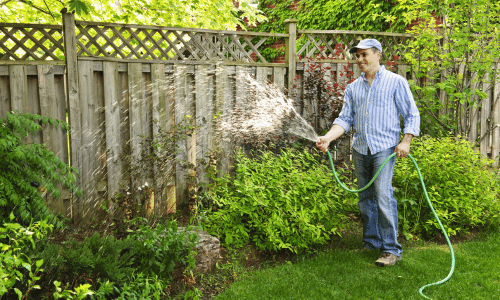As the winter season blankets the world in a serene snowy embrace, it is essential to pay heed to the well-being of our arboreal allies. Trees, with their silent grace and ecological significance, face numerous challenges during the colder months. To ensure their health and longevity, we must equip ourselves with practical tips for winter tree care and protection. In this comprehensive guide, we will explore effective strategies to nurture and safeguard these majestic beings throughout the winter season. Let us embark on this journey together, becoming stewards of nature’s guardians.
Preparing Trees for Winter: Strengthening Their Resilience
Before winter’s icy touch sets in, it is crucial to prepare trees for the impending challenges. Just like athletes training for an arduous competition, trees need conditioning to face the winter with fortitude. Consider the following tips:
Mulching Magic: Applying a layer of organic mulch around the base of trees offers insulation and protects the roots from temperature fluctuations. This layer retains moisture and prevents the soil from freezing, preserving the tree’s vital foundation.
Deep Hydration: Adequate watering before the ground freezes is crucial to maintain the trees’ hydration levels during winter. Water deeply to ensure moisture reaches the root system, striking a balance between hydration and avoiding waterlogged soil.
Pruning Precision: Pruning trees before winter helps eliminate weak or damaged branches that may succumb to heavy snow or ice loads. Consult with a certified arborist to ensure proper pruning techniques and timing for optimal tree health.
Shielding Trees from Winter Hazards: Preserving Their Canopy Majesty
Winter exposes trees to an array of hazards, from freezing temperatures to heavy snowfall. Safeguarding them from these threats is vital for their sustenance and longevity. Here are effective techniques to protect your arboreal companions:
Wrap in Burlap: Wrapping the trunks of young or sensitive trees with burlap helps prevent sunscald, a condition caused by temperature fluctuations leading to bark splitting. Wrap from the ground upward, ensuring sufficient airflow and ventilation.
Ice and Snow Removal: Accumulated snow can weigh down branches, increasing the risk of breakage. Gently remove excess snow using a broom or your hands, minimizing the potential damage. Avoid vigorous shaking, as it may cause additional harm.
Wind Barriers: Erecting wind barriers, such as burlap screens or wooden fences, on the windward side of trees shields them from harsh winter winds. These barriers reduce moisture loss and protect against potential damage caused by drying winds.
Nutritional Support: Fueling Trees for Winter Survival
Just as our bodies require nourishment to withstand the cold, trees also benefit from adequate nutrition during winter. Providing them with the right nutrients sets the stage for healthy growth come spring. Consider the following tips:
Fertilization Facts: Applying a slow-release, organic fertilizer before the ground freezes enables trees to gradually absorb essential nutrients. This practice maintains their vigor and provides a head start for the upcoming growing season.
Compost Concoctions: Amending the soil with organic compost enhances its structure, water-holding capacity, and nutrient content. Spread a layer of compost around the base of the tree, avoiding direct contact with the trunk, and gently incorporate it into the soil.
Monitoring and Maintenance: Vigilance Throughout the Winter Months
Continuous monitoring and maintenance play a vital role in preserving the health and well-being of trees throughout winter. Consider these practical strategies:
Winter Watering: During prolonged dry periods in winter, ensure trees receive adequate hydration. Monitor soil moisture levels and water as needed, being cautious not to overwater.
Pest and Disease Patrol: Winter pests and diseases can silently ravage trees, causing long-lasting damage. Regularly inspect trees for signs of infestation or disease, such as bark discoloration, oozing sap, or pest activity. Consult an arborist if any issues arise.
Professional Prudence: Engaging the services of a certified arborist for winter tree inspections is a prudent investment. Their expertise ensures early detection of potential problems, enabling timely interventions and the prevention of irreversible damage.
Conclusion:
Winter tree care and protection demand our unwavering attention and dedication to preserving the magnificence and ecological importance of these silent giants. By implementing the practical tips outlined in this guide, we become guardians of nature, nurturing and safeguarding our arboreal allies through the harshest of seasons. Remember, the well-being of trees contributes to the health and beauty of our surroundings, leaving a lasting legacy for generations to come. Let us embrace our responsibility and embark on this journey of winter tree care together, honoring the resilience and beauty of our arboreal companions.

